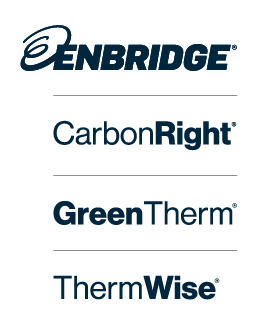Ski Utah Stories
Ski Utah stories are written by locals and seasoned professionals. The story team strive to help
you make the most of your time exploring Utah’s mountains, towns, cities and adventures.
favorite stories
Summer Activities at Utah Resorts for Nature Lovers
by Local Lexi
Check out a ton of educational tours and events for nature lovers at Utah's ski resorts this summer.
The ABCs of Summer Activities at Utah Ski Resorts
by Local Lexi
Beat the heat and retreat to Utah's high elevation ski resorts for fun activities like yoga, movie nights, horseback riding, and more...
Catch A Lift: Utah’s Lift-Served Mountain Biking
by Local Lexi
Many of Utah's trusty chairlifts are put to use each summer offering gravity enthusiasts a novel way to experience their favorite slopes on a mountain bike.
Stunning Sunset Hikes in Utah
by Local Lexi
Buzz up one of many mountain ridges in Utah for a killer sunset show. Lakes, mountains, quaint towns, we've got options for amazing places to catch a sunset!
Stay Wild: The 10 Most Common Wildflowers in the Wasatch
by Local Lexi
A deep winter in Utah results in a robust crop of wildflowers come summer. Here are 10 of the most common species in Big and Little Cottonwood Canyons.
Utah’s Best Wildflower Walks and Hikes
by Local Lexi
After Utah’s long winter, wildflowers reliably crop up in colorful profusion at high elevations. Take some time to hit the trails and admire their beauty with this guide containing a few of Utah’s best trails to savor wildflowers in bloom.
featured
Featured
Summer 2024 at Utah's Ski Resorts
by Local Lexi
From summer concerts and wildflower walks to dining and more, learn what's good at Utah's ski resorts during the summer months.
recent stories
Winter Games Returning to Utah in 2034
by Tom Kelly
It’s now official! The Olympic and Paralympic Winter Games are returning to Utah in 2034.
Family + Kids
Utah's 2034 Olympic Bid Happenings
by Local Lexi
The excitement of Utah's Winter Olympic bid for the 2034 Games reaches a fever pitch on July 23-24 of 2024. Don't miss the action!
Summer
Disc Golf at Utah Resorts
by Annie Davis
Outdoors, beautiful scenery, friendly competition. What's not to love about disc golf at one of Utah's resorts?
Summer
Volunteer Opportunities & Stewardship Activities at Utah Resorts
by Local Lexi
Looking to give back and make a positive impact in the mountains? Check out these volunteer and stewardship events around Utah's majestic canyons and ski resorts.
4th of July Festivities 2024
by Abby Stanislaw
Celebrate the 4th in Utah with events ranging from parades and fireworks to drone shows, upscale BBQ’s, and live music.
Family + Kids
Ultimate Utah Family Summer Adventure List
by Annie Davis
Whether you are a local Utah family wanting kid-friendly activities to fill your summer weekends or vacationing in the Beehive State from another wonderful part of the world, I've got you covered with this adventure-packed list.
Mountain Biking
Preventing overuse and Mountain Bike injuries with University of Utah Health
by Abby Stanislaw
University of Utah Health teams up with Ski Utah with helpful tips for mountain bike injury prevention
Summer
Tips to trail run safely this summer
by Abby Stanislaw
Ski Utah teamed up with University of Utah Health to bring you tips to stay safe and active on the trails this summer!
Summer
Ski Utah's Art & Cultural Event Guide for Summer
by Local Lexi
Broaden your horizons this summer with Ski Utah's arts and culture guide. Find fun activities at Utah's mountain resorts for date nights or forging family memories.
Mountain Biking
Last One Down, the official beer of Summer in Utah's Mountains
by Abby Stanislaw
Discover Utah's mountain biking and craft beer scene with Wasatch Brew Pub ambassador Emily West, blending adventure and refreshing post-ride brews.
authors
Last Chair Podcast Host
videos
Featured
Gin Chao | Skiing is Life
by Yeti
Chao has been able to pursue his passion for telemark skiing while building a successful business, Lone Pine Bakery. Skiing is life. Everything is just details
Video
Utah's Signature Runs
by Yeti
Explore Utah's signature runs one resort at a time with local athletes and ambassadors.
Video
Matthew Brewer | Perseverance
by Yeti
Matthew Brewer is a cancer survivor, recovering addict, bilateral above-knee amputee, adaptive athlete and USA Paralympic Ski Team athlete!
Video
Fixed Grip Chronicles | Cherry Peak Resort
by Local Lexi
Cherry Peak ski resort in Cache Valley, Utah is the state's newest ski resort. What does it take to etch a new ski resort out of rugged mountain terrain?
Video
Get the Clip!
by Khai Johannes
Lights, camera, action! We live in a world where we can take anyone from anywhere around the world with us on an adventure of a lifetime. The challenge is, how do we tell a story worth their time?
Video
Fixed Grip Chronicles | Nordic Valley Resort
by Local Lexi
Nordic Valley ski resort in Ogden Valley, Utah is a local hill with roots. What makes this storied ski area so special?
Video
Malia + Sugarbear | Brighton Patrol
by Yeti
Learn more about what it takes to be a ski patroller and avalanche dog handler through the eyes of Malia Bowman.
Video
Last Gunners - The Conclusion of Alta Ski Area's Avalanche Artillery Program
by Local Lexi
For 75 years Alta Ski Area has used military artillery for avalanche control. In 2023 the guns were fired for the last time, concluding an incredible legacy.
Video
The Streak
by Yeti
Meet three Utah residents who have made it their mission to ski every month in the Wasatch.
Video
Fixed Grip Chronicles | Eagle Point Resort
by Local Lexi
Eagle Point is a singular ski area located off the beaten track in Central Utah. There’re many reasons to take flight at Eagle Point…
Our Ultimate Guide
How A Powderhound Does A Utah Ski Vacation
by Yeti
The ultimate Utah ski vacation guide for a powderhound. Making the most of your Utah trip.
Planning The Perfect Family Ski Vacation
by Yeti
Local Utah experts compile expert suggestions to help you plan the best family ski trip ever.
Planning the Ultimate Trip With Friends
by Yeti
Your ultimate guide to planning the perfect Utah ski vacation with friends.
Family Adventures
Family + Kids
Utah's 2034 Olympic Bid Happenings
by Local Lexi
The excitement of Utah's Winter Olympic bid for the 2034 Games reaches a fever pitch on July 23-24 of 2024. Don't miss the action!
Favorite Stories
Summer Activities at Utah Resorts for Nature Lovers
by Local Lexi
Check out a ton of educational tours and events for nature lovers at Utah's ski resorts this summer.
Family + Kids
Ultimate Utah Family Summer Adventure List
by Annie Davis
Whether you are a local Utah family wanting kid-friendly activities to fill your summer weekends or vacationing in the Beehive State from another wonderful part of the world, I've got you covered with this adventure-packed list.
Favorite Stories
The ABCs of Summer Activities at Utah Ski Resorts
by Local Lexi
Beat the heat and retreat to Utah's high elevation ski resorts for fun activities like yoga, movie nights, horseback riding, and more...
Locals' Knowledge
Guide to Scenic Chairlift Rides in Utah
by Local Lexi
A number of Utah's ski areas offer scenic summer chairlift rides for hikers, bikers and mountain sightseers. Learn which resorts provide summer chairlift rides.
Family + Kids
Accessible Trails in the Wasatch
by Yeti
Accessible trails throughout the Wasatch range that provide fun and mountain access for all ages and abilities.
Family + Kids
Making an Introduction
by Khai Johannes
For years I've wanted to contribute to the longevity, growth and diversifying of the sport that's given me so much joy. But what can an individual do?
Family + Kids
Planning Your Adaptive Winter Vacation in Utah
by Paula Colman
With accessibility, availability and adaptability, Utah is the best place for people with medical and special needs to plan their next —or first —ski vacation.
Family + Kids
Tips and Tricks for Skiing with a Toddler
by Jessica Chindgren
Tips and tricks for skiing or snowboarding with a toddler
Family + Kids
Keeping Kids Safe on the Slopes
by Annie Davis
Tips and tricks to maximize the safety of kids on the slopes.
The Last Chair Podcast
Winter Games Returning to Utah in 2034
by Tom Kelly
It’s now official! The Olympic and Paralympic Winter Games are returning to Utah in 2034.
Devin Logan & Caroline Claire: Kindred Spirits
by Tom Kelly
Two Long Island girls, seven years apart in age, found each other in Utah. The duo are now telling their story through the lens of filmmakers Sarah Beam Robbins and Iz La Motte in Kindred, set to premier this fall.
Junior Bounous: Living the History of Skiing
by Tom Kelly
If you want to bring some simple joy to your own skiing, listen to this episode of Last Chair. This is why we started skiing in the first place.
OurSundays: Finding the Joy in Skiing
by Tom Kelly
An enlightening look at why we all love the culture of skiing and snowboarding.
2034 Winter Games: Will the Olympics Return to Utah?
by Tom Kelly
Join us for a conversation on Last Chair with Utah leaders about the benefits of the Games and how they view the importance to the state and its communities.
Craig Gordon: Helping Others Understand the Danger
by Tom Kelly
This episode of Last Chair is quintessential Craig Gordon – complete with stories, humor and emotion. Dig in … it’s a fun one!
Evan Thayer: Bringing Us Utah Powder
by Tom Kelly
In this episode, Evan Thayer dives back into his past, growing up with a passion for weather going to CU-Boulder to study and ski and eventually finding Utah.
James Coleman: The Freedom to Ski
by Tom Kelly
“We Give People the Freedom to Ski” are words to live by.
Chris "Gunny" Gunnarson: Building on Progression
by Tom Kelly
This hour with Gunny truly captures the spirit and culture of action sports and the passion his Woodward team has to bring it to guests of all ages.
Alex Schlopy: Roller Coast Ride of X Games Champion
by Tom Kelly
A hometown champion reflects on his winnings at the X Games and the experiences that came afterwards.
categories
deals and discounts
Lodging
Concert Lodging Special
Escape to the mountains and experience the ultimate outdoor concert getaway! Our lodging special offers the perfect opportunity to enjoy the fresh mountain air and breathtaking views while jamming out to your favorite tunes. Book Lodges at Deer Valley, Silver Baron Lodge, or Trail’s End Lodge the night of any Deer Valley concert and receive 15% off lodging. Rates start as low as $268 a night.
Lodging
Family Mountain Activities Package
Plan a fun family getaway this summer at Deer Valley! You can enjoy a range of activities, such as lift-served mountain biking, hiking, scenic rides, and tours. Book a condominium at one of the select Deer Valley Resort Lodging and Reservations managed properties, and you'll receive up to a 20% discount on your stay plus a Deer Valley Resort credit. This credit can be used towards activities, including bike lessons, rentals, retail, and dining.
Reservation Experts
30+ Day Extended Stay
Experience an extended stay this summer in the tranquil mountains of Deer Valley Resort! Whether you're a remote worker craving a change of scenery or a snowbird seeking relief from the heat, our 30+ day promotional rates beckon with breathtaking views and endless summer fun.
Reservation Experts
Getaway and Stay
Escape to the mountains and indulge in a luxurious one-night getaway at three of our premier properties: Lodges at Deer Valley, Silver Baron, or Trail's End. From April 15 to December 5, 2024, take in the serene beauty of Deer Valley with 15% off your stay. Whether you're craving adventure amidst the lush greenery or seeking solace in the majestic mountain views, our proper-ties provide the ideal setting for a quick getaway. Book now and embrace the essence of mountain living with us.
Reservation Experts
Getaway and Stay
Escape to the mountains and indulge in a luxurious one-night getaway at three of our premier properties: Lodges at Deer Valley, Silver Baron, or Trail's End. From April 15 to December 5, 2024, take in the serene beauty of Deer Valley with 15% off your stay. Whether you're craving adventure amidst the lush greenery or seeking solace in the majestic mountain views, our proper-ties provide the ideal setting for a quick getaway. Book now and embrace the essence of mountain living with us.















